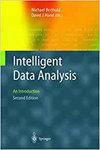基于变压器剩余使用寿命预测的特征级掩码自监督辅助学习方法
IF 0.8
4区 计算机科学
Q4 COMPUTER SCIENCE, ARTIFICIAL INTELLIGENCE
引用次数: 0
摘要
如今,海量工业数据有效地提高了数据驱动的深度学习剩余使用寿命(RUL)预测方法的性能。然而,目前仍存在为特征分配固定权重、仅在序列层面进行粗粒度考虑的问题。本文提出了一种基于变换器的端到端特征级掩码自监督学习方法,用于 RUL 预测。首先,通过提出一种细粒度的特征级掩码自监督学习方法,将一个时间窗口中所有特征下不同时间点的数据分别发送到有随机掩码和无随机掩码的两个并行学习流中。通过比较两个并行流提取的信息,模型可以学习到更多细粒度退化信息。通过上述过程提取的抽象信息不是给不同特征分配固定权重,而是特征之间不变的相关性,这对不同工况下的各种情况具有良好的泛化作用。然后,利用非对称结构对提取的信息再次进行编码和解码,并利用全连接网络建立提取信息与 RUL 之间的映射关系。我们在公开的 C-MAPSS 数据集上进行了实验,结果表明所提出的方法优于其他方法,而且在复杂的多重工作条件下优势更加明显。本文章由计算机程序翻译,如有差异,请以英文原文为准。
A feature-level mask self-supervised assisted learning approach based on transformer for remaining useful life prediction
Nowadays, the massive industrial data has effectively improved the performance of the data-driven deep learning Remaining Useful Life (RUL) prediction method. However, there are still problems of assigning fixed weights to features and only coarse-grained consideration at the sequence level. This paper proposes a Transformer-based end-to-end feature-level mask self-supervised learning method for RUL prediction. First, by proposing a fine-grained feature-level mask self-supervised learning method, the data at different time points under all features in a time window is sent to two parallel learning streams with and without random masks. The model can learn more fine-grained degradation information by comparing the information extracted by the two parallel streams. Instead of assigning fixed weights to different features, the abstract information extracted through the above process is invariable correlations between features, which has a good generalization to various situations under different working conditions. Then, the extracted information is encoded and decoded again using an asymmetric structure, and a fully connected network is used to build a mapping between the extracted information and the RUL. We conduct experiments on the public C-MAPSS datasets and show that the proposed method outperforms the other methods, and its advantages are more obvious in complex multi-working conditions.
求助全文
通过发布文献求助,成功后即可免费获取论文全文。
去求助
来源期刊

Intelligent Data Analysis
工程技术-计算机:人工智能
CiteScore
2.20
自引率
5.90%
发文量
85
审稿时长
3.3 months
期刊介绍:
Intelligent Data Analysis provides a forum for the examination of issues related to the research and applications of Artificial Intelligence techniques in data analysis across a variety of disciplines. These techniques include (but are not limited to): all areas of data visualization, data pre-processing (fusion, editing, transformation, filtering, sampling), data engineering, database mining techniques, tools and applications, use of domain knowledge in data analysis, big data applications, evolutionary algorithms, machine learning, neural nets, fuzzy logic, statistical pattern recognition, knowledge filtering, and post-processing. In particular, papers are preferred that discuss development of new AI related data analysis architectures, methodologies, and techniques and their applications to various domains.
 求助内容:
求助内容: 应助结果提醒方式:
应助结果提醒方式:


